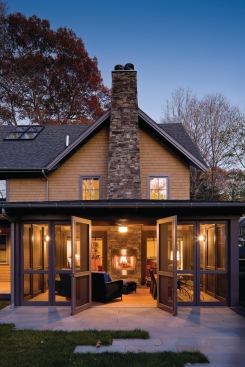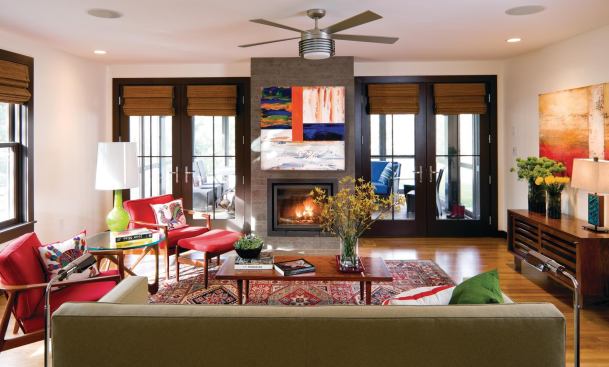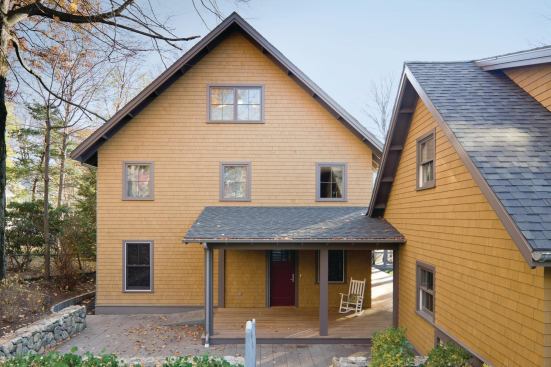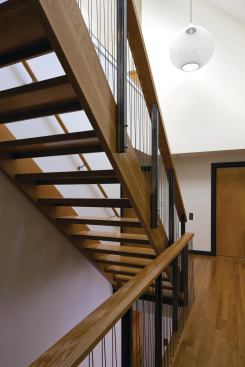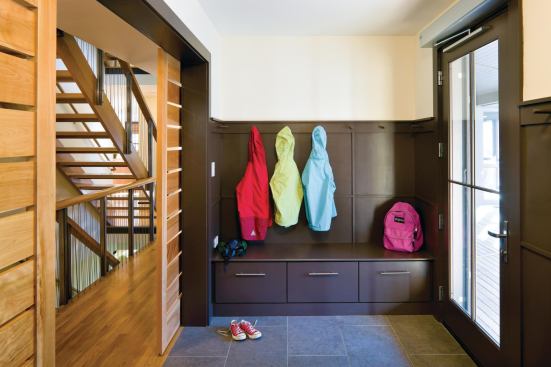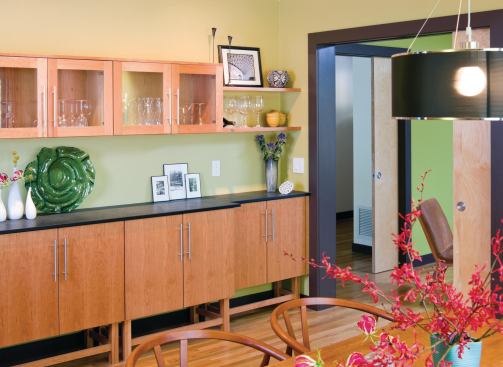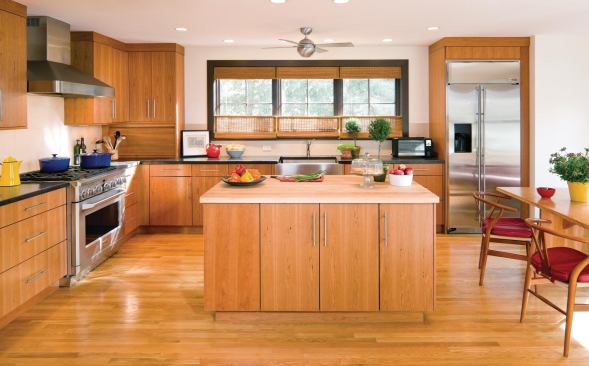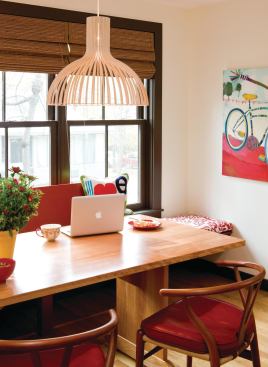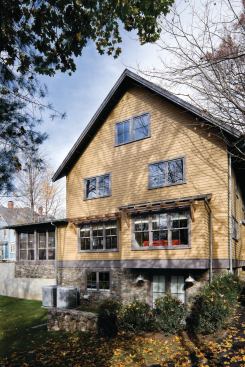Greg Premru Photography Inc.
The owners of this private residence in Newton, Mass., were able…
When a suburban Boston family of five outgrew its small Cape Cod home a few years ago, the owners began looking for a larger place, one that would lend itself to universal-style upgrades for their disabled daughter, who relies on a wheelchair full-time. They wanted to stay in their original neighborhood, which is walkable to the town center and near the children’s schools and family friends.
Project Details
Name: Private Residence, Newton, Mass.
Size: 5,300 square feet
Construction cost: $171 per square foot
Completed: January 2010
Certifications: LEED-Silver, Energy Star
HERS rating: 50
Architect: LDa Architecture & Interiors, Cambridge, Mass.
Builder: Monaco Johnson Group, Salem, Mass.
Certifier: Steven Winter Associates, New York City
Accessibility consultant: Solutions for Accessibility, Watertown, Mass.
The couple quickly discovered that homes in their area large enough for accessibility-focused retrofits such as extra-wide hallways and oversized bathrooms were out of their price range.
After a long search, the family came across a lot ideally located near their house but agonized over what to do with the dilapidated 1800s carriage house on the site. With the help of Cambridge-based LDa Architecture and Interiors, they looked into what it would take to make the old house accessible—not to mention code compliant—and decided it made more sense to tear it down.
“The clients felt this was a rare opportunity to build a home from scratch that was going to be much more energy efficient than the old one,” says LDa principal Douglas Dick. Because the owners share a deep commitment to sustainable living, conserving material resources was also a big priority, starting with salvaging as much of the old house as possible. Cabinetry, appliances, sinks, lighting fixtures, a water heater, an antique wood stove, leaded windows, and 750 square feet of flooring and lumber were pulled out of the building before it was demolished. With the help of local salvage company Green Goat, they diverted 12,599 pounds of materials from landfills and reduced the project’s carbon emissions by 6.31 tons.
Profile: Carter Williams, LEED AP Project Architect
Carter
Williams found a lot of common ground in designing her first LEED for
Homes project with universal elements: Many of the accessible features
she included in the Newton, Mass., home add to its sustainability by
making it livable for a variety of occupants in a variety of
circumstances.
“Universal design goes hand in hand with sustainable design because
it makes any space suitable, comfortable, and usable for the widest
range of people," she says.
Thinking ahead, the architect and accessibility consultant
Jacqueline Dobson considered other adaptive equipment that could become
necessary for the owners and their daughter. They speced infrastructure
for a lift-and-transfer system over the bed and added blocking between
the studs in the bathroom walls to provide for future installation of
grab bars and other assistive devices without the need for major
remodeling.
Accessibility is also on the radar screen of LDa clients thinking
about aging-in-place issues. For them, Williams recommends many of the
same tactics used in this house: an open floor plan, wide doorways, and
large showers. “If you’re making a substantial investment of a new house
or renovation, you want to be able to stick around and enjoy it for a
long time," she says. —J.G.
Even though the project location was ideal, its steeply sloping 0.31-acre lot was hardly the best place to build an accessible dwelling, says project architect Carter Williams. She mitigated the problem by nestling the four-level home into the site and designing wide, terraced play areas and a sloping path along the side elevations to provide easy wheelchair access to the backyard and lower-level entrance.
In front, a ramp integrated into the FSC-certified garapa deck provides a smooth transition from the driveway onto the wraparound porch, which leads to the front door. A second ramp is made of the same bluestone used for the terrace.
“The ramps are very subtle due to the blending of materials,” says Williams. To keep ramps short, each porch is less than 6 inches above grade; in the case of the screened porch, the floor level is flush with the yard. “It’s not your ideal positive drainage situation,” Williams says, “but we have a deep protected porch with a roof that drains to a crawl space below.”
